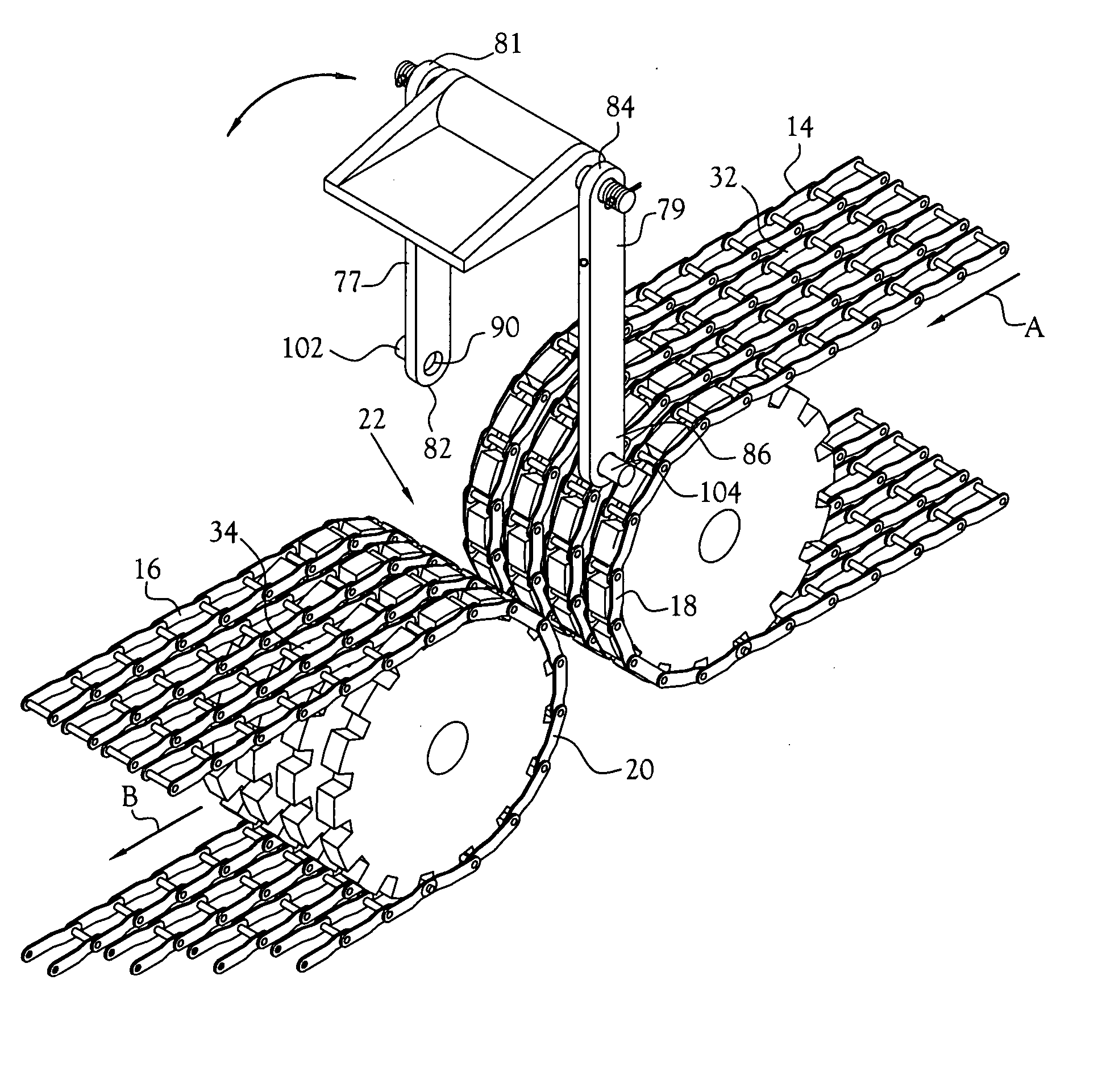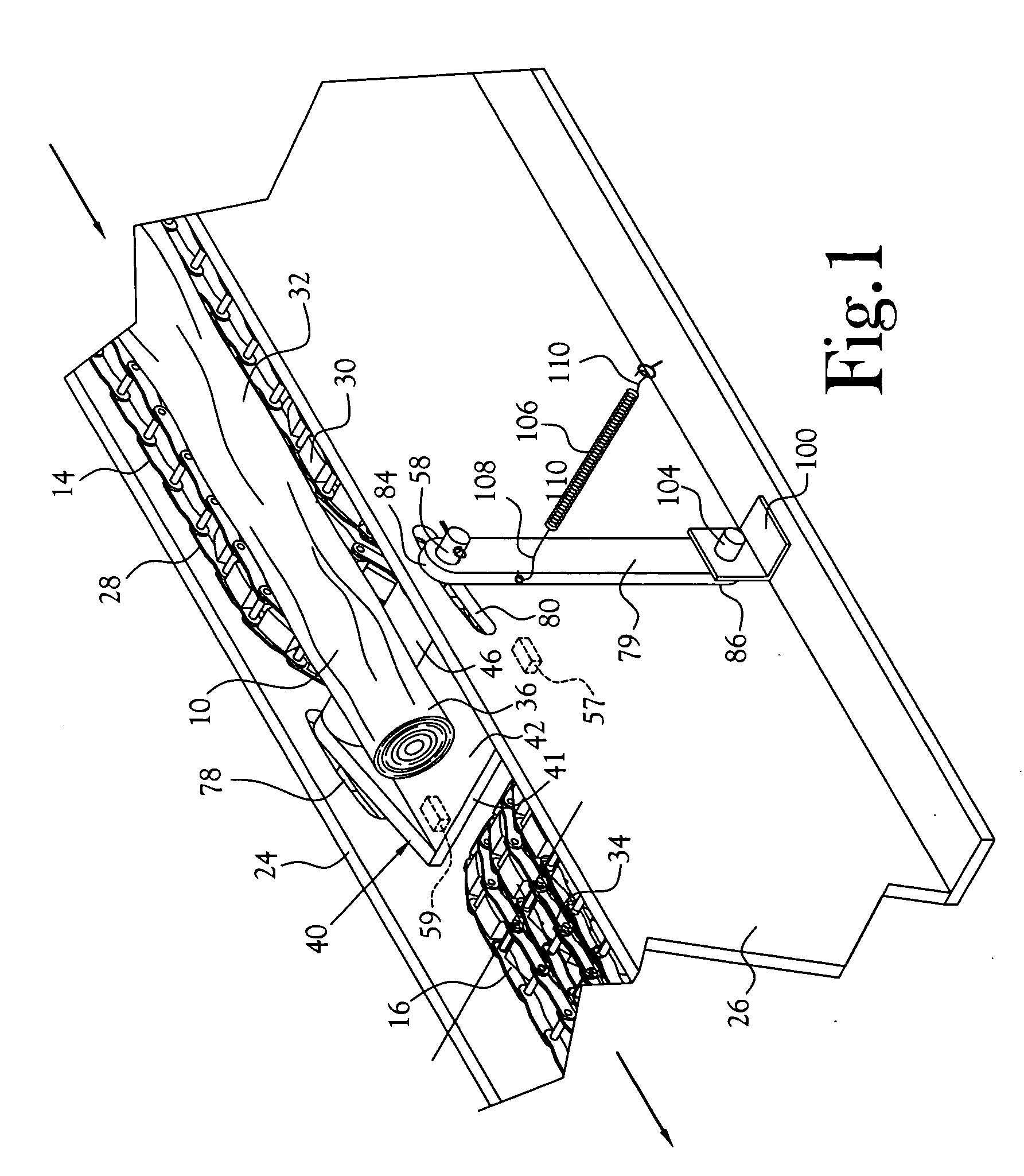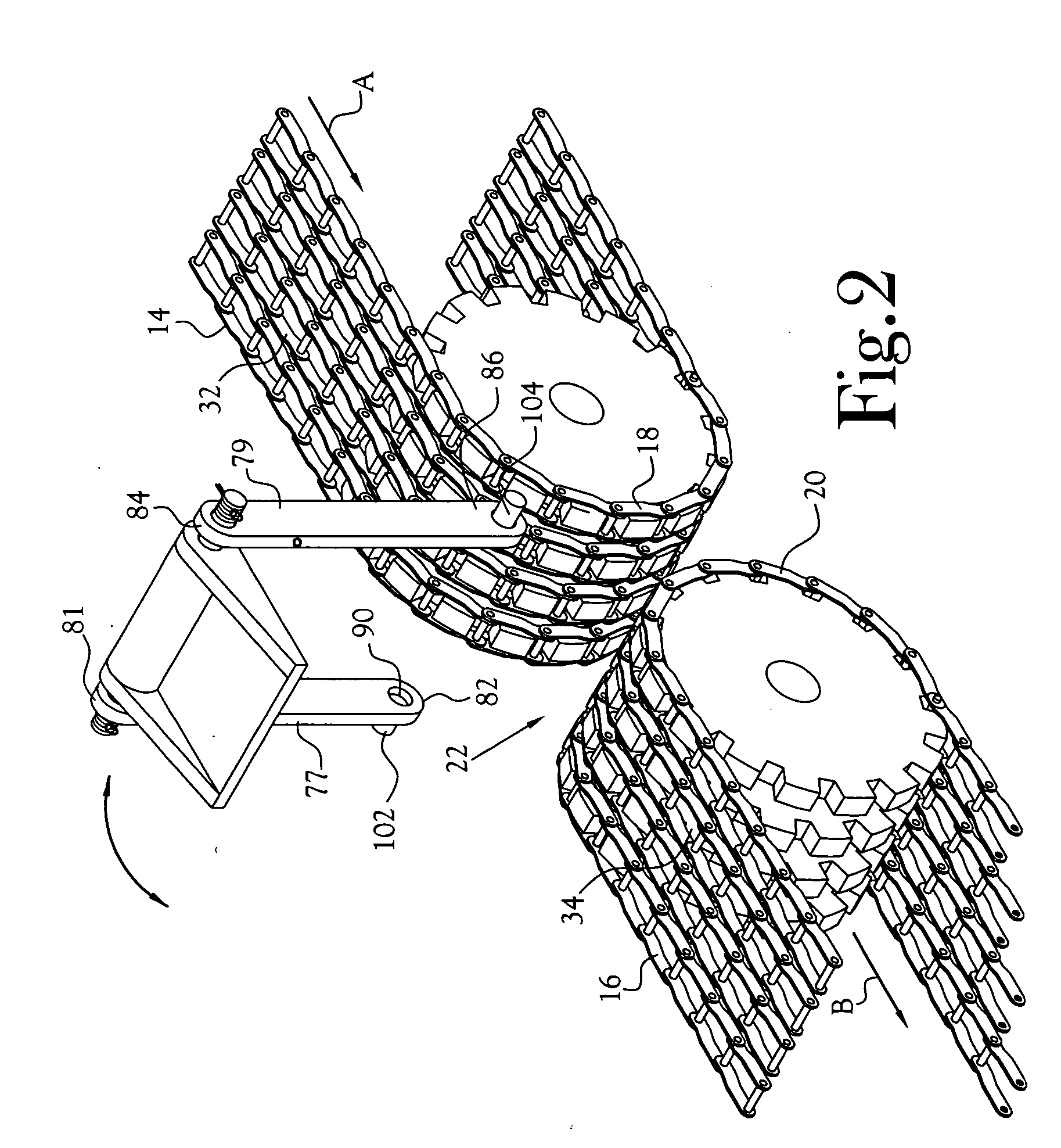Automatic conveyor slot closure
a conveyor and slot technology, applied in the field of conveyors, can solve the problems of physical limitation of the shaft movement of the shaft toward or away from the end of the downstream conveyor, and achieve the effect of limiting the gap width
- Summary
- Abstract
- Description
- Claims
- Application Information
AI Technical Summary
Benefits of technology
Problems solved by technology
Method used
Image
Examples
Embodiment Construction
[0023] Referring initially to FIGS. 1 and 2, in a typical mill for converting wood logs to chips, the debarked logs 10 (typical) are discharged by gravity from the debarking drum (not shown) onto a first conveyor 14 and conveyed toward a chipper (not shown). Shortly before reaching the chipper, the logs are transferred from the first conveyor to a second conveyor 16 which completes the transfer of the logs to the chipper. As depicted in FIG. 2, the end 18 of the first conveyor terminates short of, but adjacent to, the end 20 of the second conveyor. These ends of the conveyors are spaced apart and define an open gap 22 therebetween which extends substantially fully across the width of the conveyors. As seen in FIG. 1, the conveyors are supported by superstructure which typically includes first and second support beams 24,26 disposed along opposite sides 28,30 of the conveyors and spaced apart by a distance sufficient to receive the conveyors therebetween. Typically, the gap between t...
PUM
 Login to View More
Login to View More Abstract
Description
Claims
Application Information
 Login to View More
Login to View More - R&D
- Intellectual Property
- Life Sciences
- Materials
- Tech Scout
- Unparalleled Data Quality
- Higher Quality Content
- 60% Fewer Hallucinations
Browse by: Latest US Patents, China's latest patents, Technical Efficacy Thesaurus, Application Domain, Technology Topic, Popular Technical Reports.
© 2025 PatSnap. All rights reserved.Legal|Privacy policy|Modern Slavery Act Transparency Statement|Sitemap|About US| Contact US: help@patsnap.com



